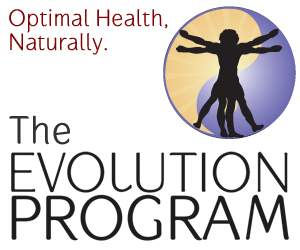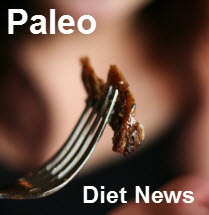Losing Weight on the Paleo Diet
Posted on August 22, 2011 By Brian Cormack Carr Food and Health, Low Carbohydrate, Nutrition, Paleo Diet, Paleo workout
Photo courtesy of Wikipedia
Recently, I re-watched a BBC programme I had recorded when it was first broadcast: 10 Things You Need To Know About Losing Weight. In it, medical journalist Michael Mosley investigated the latest scientific breakthroughs in slimming, uncovering ten ways alleged to accelerate the shedding of unwanted body fat. I thought it’d be fun to revisit some of them from a paleo perspective, and consider why losing weight on the paleo diet is so effective for many who fight the battle of the bulge.
1. “Don’t skip meals, especially breakfast as it makes you crave higher calorie foods”
Breaking the fast certainly is important, and a paleo breakfast can be a feast indeed. However, do remember that from a paleo perspective, breakfast can come at any time of the day. Our ancestors almost certainly didn’t have a regimented time for breakfast. How could they? They would eat when food was available to them, and when the hunt had been successful. Since going paleo, freed up from the blood-sugar rollercoaster, I’ve found that my hunger level on any given morning varies depending on several things, including what I ate (and when) the day before, and also how active I’ve been. Sometimes, it’ll be well into the morning – or even mid-day – before I need to break the fast. There’s evidence that this , so skipping breakfast may not be such a bad idea after all! I’d change this precept to: Break the fast when you’re hungry, not when the clock tells you to eat. And make the meal a good one.
My breakfast this morning. Do you think I felt deprived?
2. “Use smaller plates to control portion size”
One of the nice things about paleo is that it’s quite hard to overeat the kind of nutrient-dense foods you will be eating. Meat, eggs, fish, nuts, seeds, vegetables, fruits: abundance and satisfaction are never far away. You may find you only want a small plateful; but again, if you’re hungry – eat! I’d say a more effective piece of advice is based around ensuring you don’t spike your blood sugar and consequently, your appetite: Keep your carbohydrates under control in order to avoid over-eating.
3. ”Count your calories”
Not only would this be interminably boring, there’s growing evidence that it just doesn’t work. If it did, many people who regularly restrict their calories would see far greater rates of weight loss than they actually do. We all know that weight loss slows down over the course of a low-calorie diet, even if calorie consumption stays the same, and there’s still lots of fat to lose. There’s some great information on why this is so from obesity researcher Zoe Harcombe in the video below, and from Natural Food Finder, here. Let’s change this rule to: Don’t count calories. Eat lavishly according to paleo precepts, and enjoy a well-nourished body that stops holding on to stubborn fat.
4. “Don’t blame your metabolism”
Quite right! Too much dietary advice has centred on the notion that we somehow have to “speed up” our metabolic rate in order to “burn off more fat”. It’s a very partial picture, and metabolism is far more complex beast. A good explanation for metabolism comes from Dr. Diana Schwarzbein, who points out that metabolism consists of two elements: the “breaking down” part and the “building up” part. The important thing is to achieve balance – so that your body is building up with nourishing foods and therapeutic movement at a rate that balances its break up from the rigours of daily life (otherwise known as aging). What builds a body up? Good quality protein and nourishing fats – both plentiful on the paleo diet. I’d reframe this as: Look after your metabolism and make sure – as far as is possible – that your body is building up more than it’s breaking down.
5. “Protein staves off hunger pangs”
A reasonable point – protein is certainly more satisfying and longer-lasting than carbohydrates, which convert relatively quickly to sugar in the bloodstream (even the wholegrain kind). Don’t forget, though, that another satisfying macronutrient is fat. Eat your protein with all its attendant natural fats, and you’ll be doing your health, and your waistline, a great favour. Let’s turn this one into: A wide range of nourishing, whole, paleo-approved foods stave off hunger pangs.
Photo courtesy of Wikipedia
6. “Soup keeps you fuller for longer”
In the programme, the “soup” they spoke about was a liquidized meal with added water – more of a thick mush than soup. As always, quality counts. A soup full of processed junk like industrialized vegetable oils and refined carbohydrates won’t satisfy (and may just slowly kill you in the long run). One made with whole meats and delicious fresh veggies, on the other hand – now that will satisfy. Your choice. I’d change this rule to: Good food keeps you fuller for longer than processed fake-foods could ever hope to.
7: The wider the choice, the more you eat.
This is almost certainly true if you’re under the spell of highly processed sugary snacks. Those supermarket confectionary aisles are a veritable minefield. The siren call of all the different sugary snacks is hard to resist if you’re addicted to processed foods, but we all know that processed food doesn’t – can’t - satisfy for very long at all, and it will make you fat, to boot. When it comes to good food, however, some variety is a good thing, since this will give you the widest complement of nutrients and flavours and will therefore be intrinsically satisfying. I think it’s truer to say: The lower the quality of food, the more you’re likely to eat. Choose wisely!
8. “Low fat dairy helps you excrete more fat”
I’m shuddering as I write this. Do you know what feedlot farmers feed their pigs to fatten them? Skimmed milk. Milk is a nourishing food when it comes in its whole, untampered form - and the fat is the most nourishing part, essential to health, energy and optimal metabolic function. Evidence now shows that than skimmed products. But beware – some people find that any dairy in the diet stalls their weight loss efforts. Let’s change this to: Whole, unprocessed dairy can be a useful occasional addition to a paleo diet, provided you aren’t sensitive to it.
9 and 10. “Exercise goes on burning fat even while you sleep” and “Just keep active”
These aren’t bad pieces of advice,but it’s important to qualify them by mentioning the type of exercise that they apply to. Exercise scientists now believe that steady-state cardiovascular exercise (aerobics), whilst conditioning to the heart and lungs - and therefore well worth doing - is not a great fat-burner. Low-frequency strength training, at a level that stimulates muscle growth, and high intensity interval training (HIIT) are better bets if you want to trim off some inches. Evidence shows they are both more effective at accessing fat stores for fuel. I’m going to turn to Mark Sisson’s advice in his book ’The Primal Blueprint’ for a better statement of what works: Move frequently at a slow pace; lift heavy things; and sprint once in a while. Read more of Mark’s advice about how our ancestors kept fit, here.
If you found this article useful, please click the ‘LIKE’ button below to share on Facebook. We also invite you to leave comments, and join the Paleo Diet News discussion!
Brian Cormack Carr is a professional life and career coach, writer, and advocate of a real foods diet.
His home on the web is www.cormackcarr.com where you will find more articles, a free newsletter, and information about his online career-creation programme www.vitalvocation.com. You can follow Brian on Twitter: @cormackcarr
aerobics, dairy products, dieting, exercise, intermittent fasting, interval training, metabolism, paleo diet, strength training, weight loss
Did you enjoy this?
If you liked this article, enter your email below and we will send you a brief and focused newsletter every Thursday morning. No fluff, no spam, no advertising. Just the best of the best recipes, articles, and news.






This is a great article Brian.
But I disagree with one point. Aerobics or steady state cardiovascular exercise actually weakens the heart and lungs. When doing these types of exercises your heart does not get challenged. As soon as you need the extra oomph, you stress your heart by pushing harder and you can actually damage your heart or worse, suffer a heart attack. Think of all those marathon runners dying during or after a race. High intensity Interval training as you point out is phenomenal for weight loss, but it also strengthens the heart and lungs for those times of sudden need. You know, when you’ve become the prey and have to be one step ahead of the lion.
Great article Brian! There are some really good tips here, and a few conventional wisdom myths dispelled.
Greatly cutting down on, or cutting out fruit and starches completely, is another way to speed up any weight loss efforts.
Thanks!
Barry - you’re quite right; I used to be a real fiend for fruit, but limit myself now to no more than a piece a day of low-GI/high anti-oxidant fruits like berries. Made a big difference!
Lila - good point re: exercise. I guess I was thinking of a much gentler approach to aerobics - more the “move frequently at a slow pace” approach of Mark Sisson - like walking, taking the stairs, etc. Definitely a more ancestral approach than attacking the stairmaster!
Ah, now I see, okay, good point about Mark’s method. Much better approach.
I’ve also limited fruit to berries, grapefruit and apples. Much happier now!